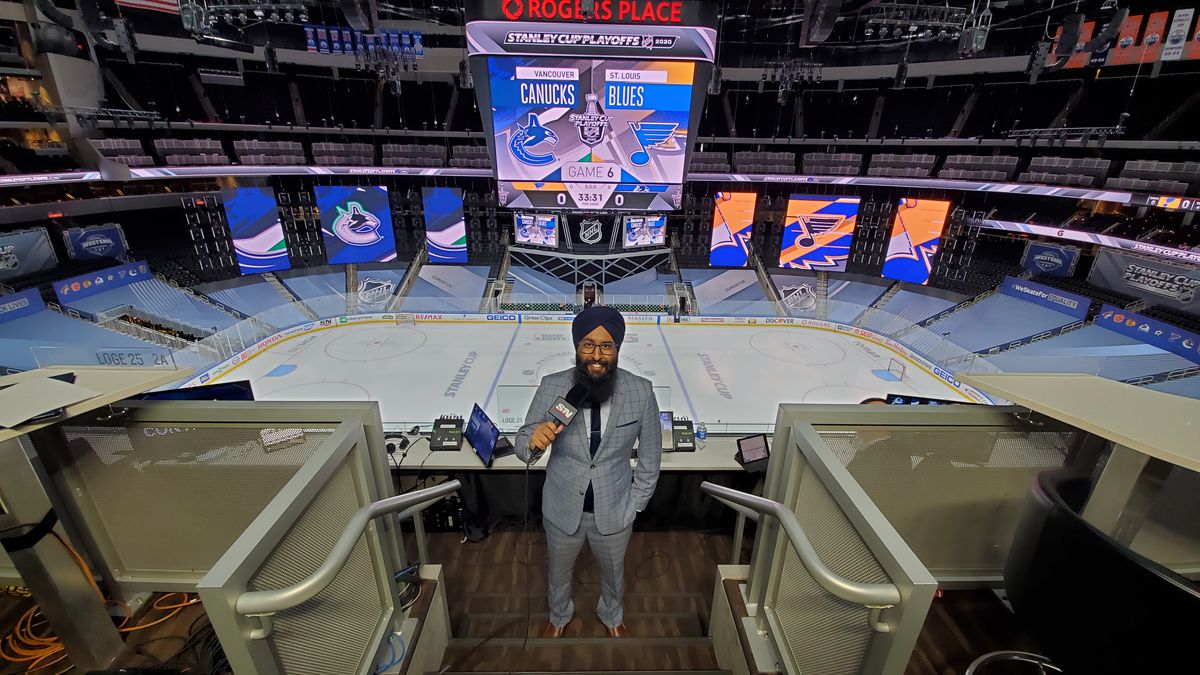As hockey struggles with its reputation as a sport that is inhospitable to diverse communities, one of its most stalwart supporters is courting some of those communities with an NHL broadcast next month in seven of the most commonly spoken languages among Canada’s immigrant populations.
Molson Canadian is sponsoring a Hockey Night in Canada broadcast on April 17 that will offer online play-by-play in a choice of Cantonese, Mandarin, Hindi, Vietnamese, Tagalog, German and Arabic, in addition to the conventional broadcasts in English on Sportsnet and in Punjabi on OMNI.
“Hockey is a great sport and a key part of the cultural fabric in Canada, but it’s not the most diverse sport, in terms of the player base, and it’s not the easiest sport for consumers to follow,” said Joy Ghosh, a senior brand director with Molson Coors who oversees the Molson family of brands. “There’s a pretty distinct hockey lingo, the broadcast can be quite quick if you’re new to the sport, and obviously it’s a little harder to get into, especially if you’re new to Canada.”
Ghosh noted that approximately 22 per cent of Canadians are foreign-born, with an additional 350,000 people coming into the country during an average year (during non-COVID-19 times). Molson, he said, “really wanted to be that bridge that can help consumers that are new to Canada embrace and be part of this great cultural tradition.”
While most of those who are new to Canada likely speak English, Ghosh noted that even long-time citizens such as his parents, who immigrated to Canada from India more than 25 years ago, might appreciate watching a game called in the language of their original country.
“There’s something magical about seeing a broadcast like the Leafs vs. the Canucks in your native tongue,” he said. “There’s a sense of respect.”
Viewers will be able to click on sportsnet.ca/molson to access livestreams of that evening’s doubleheader of Toronto vs. Vancouver followed by Edmonton vs. Winnipeg. The multiple audio streams will be produced by Spalk, a technology startup out of New Zealand that enables broadcasters to offer a variety of commentators who can call a game from anywhere in the world. With new viewers expected to tune in, the commentators may spend some time during the breaks in play explaining some of the game’s finer points.
Molson intends to drum up interest in the broadcast by courting coverage in Canada’s local ethnic newspapers. “I don’t think they’ve heard of a brand or partnership reaching out to them in this type of context before, so we’re optimistic that will help get some reach,” Ghosh said. The company has also hired influencers in each of the seven languages.
If consumers wish to express their gratitude in a commercial manner, Molson will offer cans of Canadian in the seven languages on the company’s online store, shipandsip.ca, leading up to that weekend’s broadcast. (Only consumers in the Greater Toronto Area will be able to order those cans.)
For Rogers Sports & Media, the effort dovetails with some of its other third-language sports efforts over the years, including Blue Jays broadcasts in Tagalog, on OMNI, and hockey broadcasts in Punjabi, which have aired in some form or another on Canadian TV since 2008. “For us, it’s always about growing the hockey base. We’re shepherds of the game,” said Anthony Attard, vice-president of sports and NHL sales for Sportsnet. “This just gives us much more of a broader reach for the game, and makes the game more inclusive.”
He recalled that his own father was an immigrant from Malta whose English-language skills were aided by watching hockey games.
“It’s continuing that tradition. We’re providing the language that people want the game in, and we’re going to continue to evolve that, no different than we did with Punjabi.”
He acknowledged that the Hockey Night broadcast may seem like a stunt. “You have to try [different] things,” he said. “This is a one-day event, and depending on the success and the uptake, a sustainable strategy does need to be built and evolved, based on second-language opportunities for new Canadians and existing Canadians.”
“Could we look at maybe expanding our roster of languages outside of Punjabi for hockey and Tagalog for baseball? Absolutely.”
Ghosh acknowledged that the multicultural initiative comes as hockey itself is grappling with some of its failures to make Canada’s diverse communities feel as if they belong in the sport. Four years ago, the NHL launched a campaign to declare “Hockey Is For Everyone” in hopes of fostering a more inclusive fan base. But the league itself has been accused by some of its own players of failing to do enough for the cause of racial justice. And the sport’s fan base is still overwhelmingly white – 77.1 per cent of fans, according to a FiveThirtyEight/IPSOS poll of Americans taken last May.
“It’s definitely a challenge we’re cognizant of,” Ghosh said. “We don’t believe this is going to be a solution to all of the long-standing issues in diversity and inclusion in the sport. But we think this is a good starting point.”
SIMON HOUPT
The Globe and Mail, March 31, 2021

